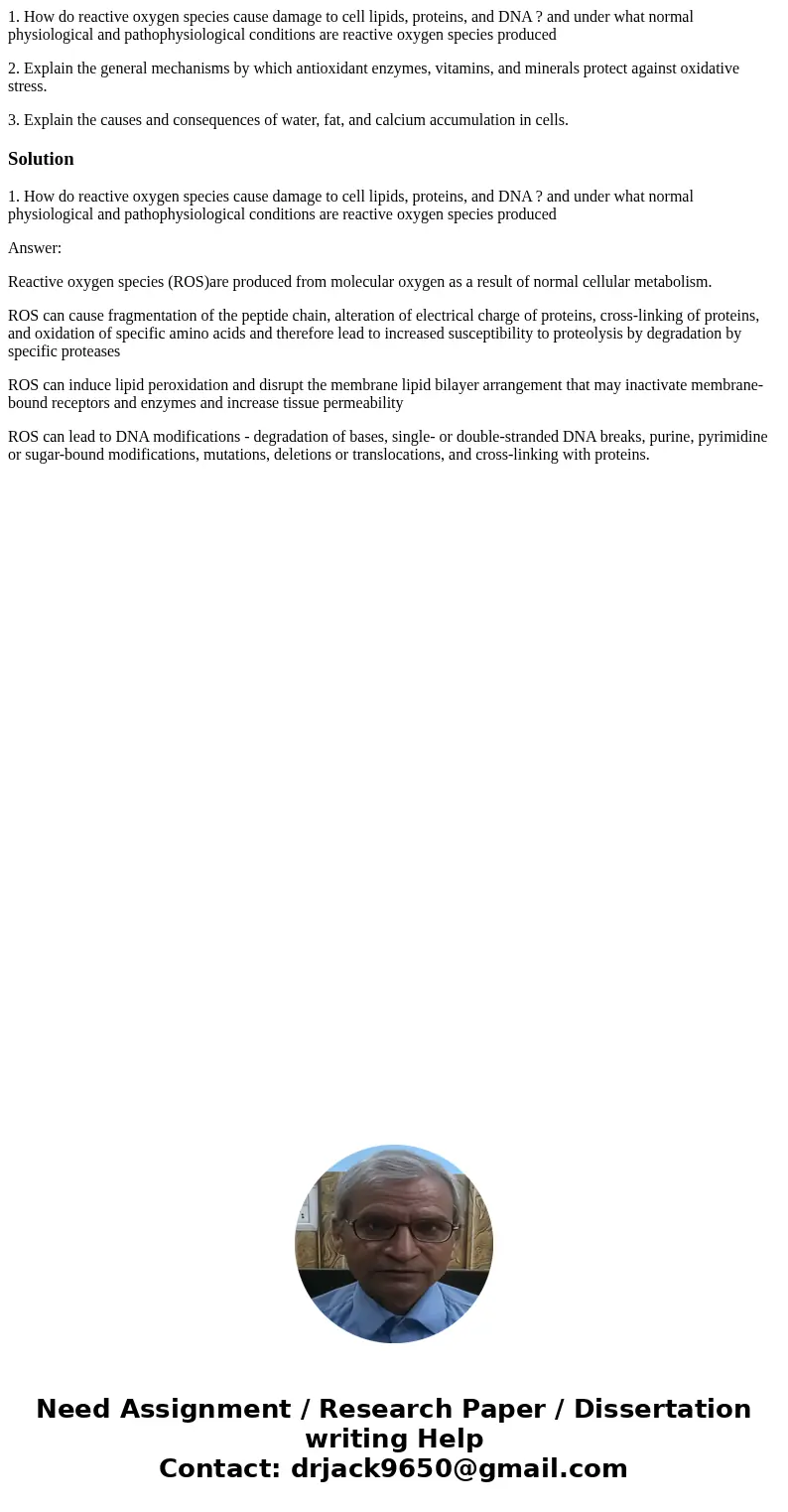1 How do reactive oxygen species cause damage to cell lipids
1. How do reactive oxygen species cause damage to cell lipids, proteins, and DNA ? and under what normal physiological and pathophysiological conditions are reactive oxygen species produced
2. Explain the general mechanisms by which antioxidant enzymes, vitamins, and minerals protect against oxidative stress.
3. Explain the causes and consequences of water, fat, and calcium accumulation in cells.
Solution
1. How do reactive oxygen species cause damage to cell lipids, proteins, and DNA ? and under what normal physiological and pathophysiological conditions are reactive oxygen species produced
Answer:
Reactive oxygen species (ROS)are produced from molecular oxygen as a result of normal cellular metabolism.
ROS can cause fragmentation of the peptide chain, alteration of electrical charge of proteins, cross-linking of proteins, and oxidation of specific amino acids and therefore lead to increased susceptibility to proteolysis by degradation by specific proteases
ROS can induce lipid peroxidation and disrupt the membrane lipid bilayer arrangement that may inactivate membrane-bound receptors and enzymes and increase tissue permeability
ROS can lead to DNA modifications - degradation of bases, single- or double-stranded DNA breaks, purine, pyrimidine or sugar-bound modifications, mutations, deletions or translocations, and cross-linking with proteins.

 Homework Sourse
Homework Sourse